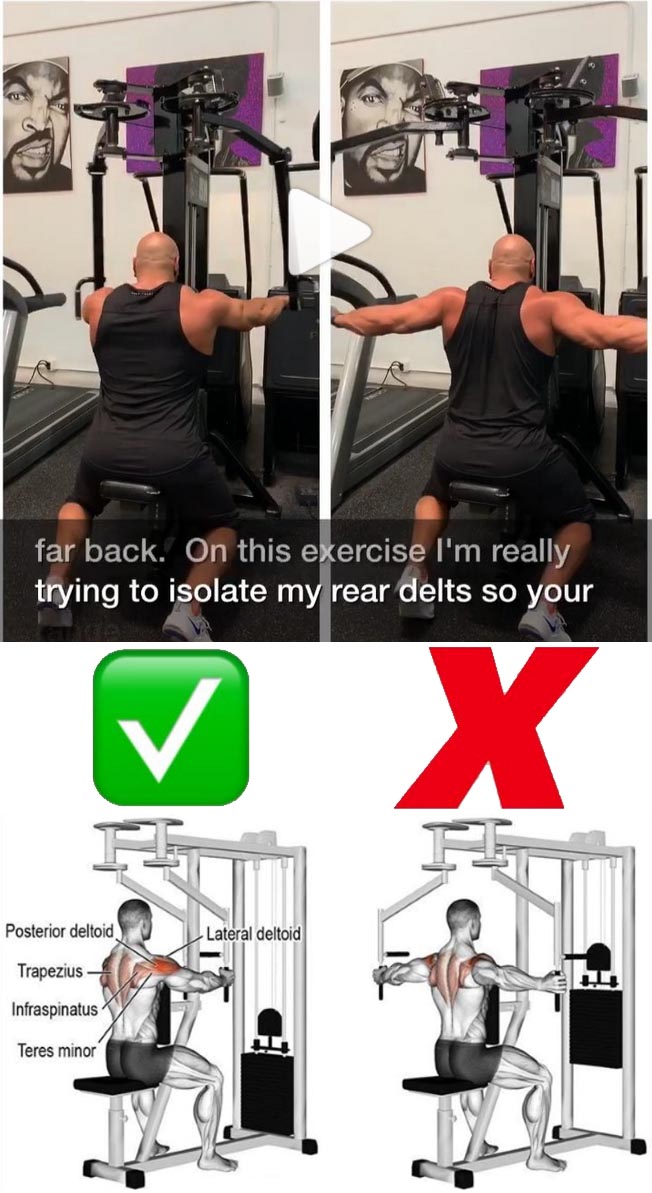
Reverse Pec Deck is a popular exercise that targets the muscles of the upper back and shoulders. This exercise is also known as the Rear Delt Fly or the Reverse Fly. The Reverse Pec Deck is performed using a machine that has two pads to hold onto and a set of weights that can be adjusted to increase or decrease the resistance.
Muscles Worked

The Reverse Pec Deck primarily targets the rear deltoids, which are the muscles located at the back of the shoulder. However, it also works the rhomboids, which are the muscles that connect the scapula to the spine, and the trapezius, which is the muscle that runs from the neck to the shoulders.
The rear deltoids are often neglected in most workout routines, which can lead to muscle imbalances and poor posture. By performing the Reverse Pec Deck, you can strengthen these muscles and improve your overall posture.
How to Perform the Reverse Pec Deck
To perform the Reverse Pec Deck, follow these steps:
- Adjust the weight on the machine to your desired resistance level.
- Sit on the machine with your back against the pad and your feet on the floor.
- Grasp the handles with an overhand grip.
- Keep your elbows slightly bent and your arms parallel to the floor.
- Squeeze your shoulder blades together and pull the handles back until your arms are fully extended.
- Lower the handles back to the starting position.
- Repeat for the desired number of reps.
Variations

There are several ways to vary the Reverse Pec Deck exercise to target different muscles:
- Change the grip: Switching from an overhand grip to an underhand grip can target the biceps and forearms.
- Adjust the seat: Raising or lowering the seat can change the angle of the exercise and target different muscles.
- Use one arm: Performing the exercise with one arm at a time can improve balance and target each side of the body separately.
- Change the tempo: Slowing down the movement can increase time under tension and lead to greater muscle growth.
Benefits of the Reverse Pec Deck
The Reverse Pec Deck has several benefits, including:
- Strengthening the rear deltoids, rhomboids, and trapezius muscles
- Improving posture and reducing the risk of back pain
- Targeting muscle imbalances and improving overall muscle symmetry
- Increasing shoulder stability and reducing the risk of injury
Precautions

Like any exercise, the Reverse Pec Deck should be performed with caution and proper form to avoid injury. Here are some precautions to keep in mind:
- Start with a lighter weight and gradually increase as you become more comfortable with the exercise.
- Avoid jerky or sudden movements and focus on slow, controlled reps.
- Keep your back straight and your core engaged to avoid straining your lower back.
- If you have any shoulder or back injuries, consult with a doctor or physical therapist before attempting this exercise.
Conclusion
The Reverse Pec Deck is a great exercise for targeting the muscles of the upper back and shoulders. By incorporating this exercise into your workout routine, you can improve your posture, reduce the risk of injury, and achieve a more symmetrical physique. Remember to perform the exercise with proper form and gradually increase the weight as you progress.